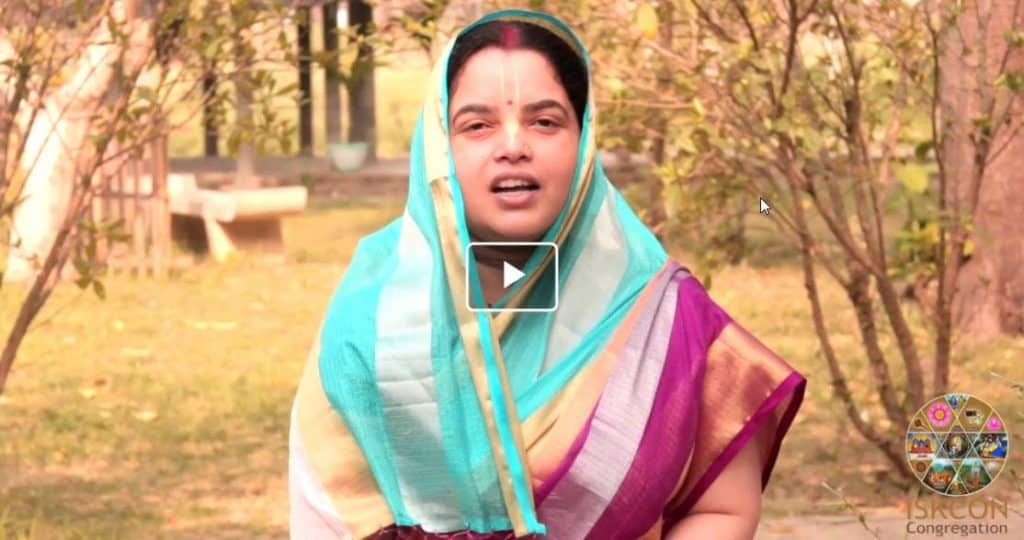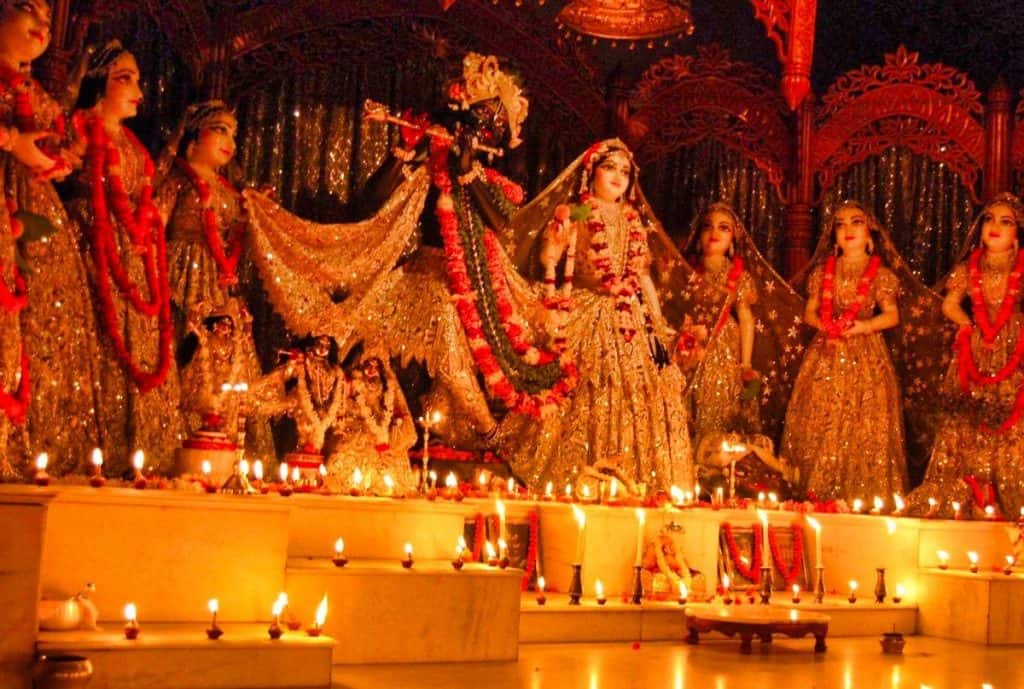The qualities of a pure devotee are explained in Śrīmad-Bhāgavatam (4.12.37)
śāntāḥ sama-dṛśaḥ śuddhāḥ
sarva-bhūtānurañjanāḥ
yānty añjasācyuta-padam
Acyuta-priya-bāndhavāḥ
Persons who are peaceful, equipoised, cleansed and purified, and who know the art of pleasing all other living entities, keep friendship only with devotees of the Lord; they alone can very easily achieve the perfection of going back home, back to Godhead.
This verse indicates that the devotees are peaceful, for they have no demands for their personal sense of gratification and they fully surrendered to the Supreme Personality of Godhead and think of himself as completely helpless, just as a child feels complete peace in depending on the parent, so a devotee depends on the mercy of the Lord.
He sees all living entities with spiritual vision and does not discriminate on the platform of the bodily concept of life. Such qualities develop only in the association of devotees. Without the association of devotees, one cannot advance in Krsna consciousness. Therefore Srila Prabhupad established the International Society for Krsna consciousness. Devotees of the Lord, can please everyone, as is evident in the Krsna consciousness movement that they invite everyone without discrimination and request everyone to sit and chant the Hare Kṛṣṇa mantra and distribute free prasādam. Since a devotee constantly chants the Hare Kṛṣṇa mantra, no contamination of the material world can touch him. Muci haya śuci haya yadi kṛṣṇa bhaje. It is said that even a cobbler or person born in the family of a cobbler can be elevated to the position of a brahmana (suci) if he takes to Krsna consciousness. Any person who is purely Kṛṣṇa conscious and who engages in chanting the Hare Krsna mantra is the purest in the whole universe.
The best example of pure devotee is His Divine Grace A. C. Bhaktivedanta Swami Pabhupada. He began chanting the Hare Krsna maha-mantra under a tree in New York’s Tompkins Square Park, in 1966 and a huge crowd gathered, but he just did his chanting with closed eyes. Thereby he inaugurated the western advance of Lord Caitanya Mahaprabhu’s glorious Sankirtana movement. On July 13th, 1966 Srila Prabhupada incorporated ISKCON New York, and in Autumn of 1966 he established the ISKCON Press, which clearly demonstrated his emphasis on the importance of publishing and distributing his authorised books. Since that time, many millions of his books have been distributed throughout the world, translated into many different languages.
Srila Prabhupad incorporated ISKCON just in one month after starting a class on Bhagavad-gita thrice in a week at 7:00 p.m in a shabby shop at the bowery. Not many people were coming because nobody knew. Srila Prabhupada would sit on the floor on the mat and chant kirtan and give class. Bowery street was the worst, most decrepit rundown, dirty, filthy and crowded place in New York. The drunkards would come, sit there and drink very cheap alcohol and stay in flop houses at night. They would drink so much then they would vomit and urinate. They would pass out on the sidewalk and sometimes they would die. There were dead corpses, but the young people were living there because the rents were very cheap. Srila Prabhupad was staying in such a dirty place.
To register ISKCON legally as a nonprofit, tax-exempt religion, required money and a lawyer. Srila Prabhupad met one musician, Carl Yeargens (Kaalpati), who already had some experience in forming a religious organisation, and when he met Prabhupada on the bowery he agreed to help. He contacted his lawyer, a young Jewish man named Stephen Goldsmith, who had an office on Park Avenue and immediately got fascinated by the idea of setting up a religious corporation for an Indian swami. He visited Prabhupada several times at 26 Second Avenue, and they discussed incorporation, tax exemption, Prabhupada’s immigration status and Krsna consciousness. He began attending the evening lectures, where he was often the only nonhippie member of the congregation. One evening, having completed all the legal groundwork and being ready to complete the procedures for incorporation, Mr. Goldsmith came to Prabhupada’s lecture and kirtan to get signatures from the trustees for the new society. There was a need for half a dozen Americans to sign the papers. There were no devotees but some regular listeners, Michael Grant who later became Mukunda and his wife Jan who later became Janaki happened to be there that night and other couples were also present there. Srila Prabhupad said, I want everybody to sign these papers and they said well if the Swami wants then we will do it. So they signed even if they did not know what they were signing, not following the regulations or anything. They have absolutely no qualifications and these signers would be trustees. So why did Prabhupad do that? Because he was following the principle that we should utilise whatever we have in Krsna consciousness. No matter how insignificant it is. Prabhupad said that the process of Krsna consciousness is to fan the spark. If you fan a spark then it becomes fire.
But even before its legal beginning, Prabhupada had been talking about his ‘International Society for Krsna Consciousness’, and so it had appeared in letters to India and in ‘The Village Voice’ newspaper. Srila Prabhupada’s friend had suggested a title that would sound more familiar to Westerners, ‘International Society for God Consciousness,’ but Prabhupada said that is has to be exactly ‘Krsna Consciousness’, ‘God’ was a vague term, whereas ‘Krsna’ was exact and scientific; ‘God consciousness’ was spiritually weaker, less personal. And if Westerners did not know that Krsna was God, then the International Society for Krsna Consciousness would tell them, by spreading His glories ‘in every town and village.’
‘Krsna consciousness’ was Prabhupada’s own rendering of a phrase from the book of Srila Rupa Goswami’s — Padyavali:
Krsna-bhakti-rasa-bhavita
‘to be absorbed in the mellow taste of executing devotional service to Krsna.’
More than ten years after the date of his ISKCON New York Incorporation, Srila Prabhupada was still emphasising the meaning and intention behind his society’s name. During an evening darshan in Tehran, Srila Prabhupada said, ‘If you want to know Krsna, then you have to know from the people who are dealing with Krsna. That’s all. They have no other business. Our Krsna consciousness movement means we are dealing with Krsna. That’s all. We’re writing books, so many books for Krsna. We are preaching and going country to country. We simply deal with Krsna. Therefore the movement is known as “Krsna consciousness.” Somebody suggested, “Why don’t you write ‘God consciousness’?” No, if I say “God consciousness,” they’ll bring so many gods. It is very simple. If we take it seriously, then the benefit is there. But if we hesitate, it is our misfortune.’
Within ISKCON’s articles of Incorporation, Srila Prabhupada included seven purposes of the International Society for Krsna Consciousness quite similar to those presented in his prospectus for The League of Devotees, which he founded in Jhansi, India in 1954.
(a) To systematically propagate spiritual knowledge to society at large and to educate all peoples in the techniques of spiritual life in order to check the imbalance of the values in life and to achieve real unity and peace in the world.
(b) To propagate a consciousness of Krsna, as it is revealed in the Bhagavad Gita and Srimad Bhagavatam.
(c) To bring the members of the society together with each other and nearer to Krsna, the prime entity, thus to develop the idea within the members, and humanity at large, that each soul is part and parcel of the Quality of Godhead (Sri Krsna).
(d) To teach and encourage the ‘sankirtan’ movement, congregational chanting of the Holy Names of God as revealed in the teachings of Lord Sri Caitanya Mahaprabhu.
(e) To erect for the members and for society at large, a Holy place of transcendental pastimes, dedicated to the personality of Krsna.
(f) To bring the members closer together for the purpose of teaching a simpler and more natural way of life.
(g) With a view towards achieving the aforementioned purposes, to publish and distribute periodicals, magazines, books and other writings.
With a vision that soars off to the end of the millennium and far beyond, and yet with his two feet planted solidly on Second Avenue, Srila Prabhupada began an International Society for Krsna Consciousness. He had many practical responsibilities: he had to pay the rent, and he had to incorporate his society and pave the way for a thriving worldwide congregation of devotees. He did not see his extremely reduced present situation as a deterrent from the greater scope of his divine mission. He knew that everything depends on Krsna, so whether he succeeds or fails is all up to the Supreme. He has only to try.
At a certain point Srila Prabhupad was not having anything, he was sitting on a mat, barefoot, not having money to eat, but Srila Prabhupad wasn’t seeing what there was, but what it would become. That’s the brilliance and nobody else had that vision. We humbly hope that all of you can join us in fulfilling his mission.
Srila Prabhupad ki Jaya!



